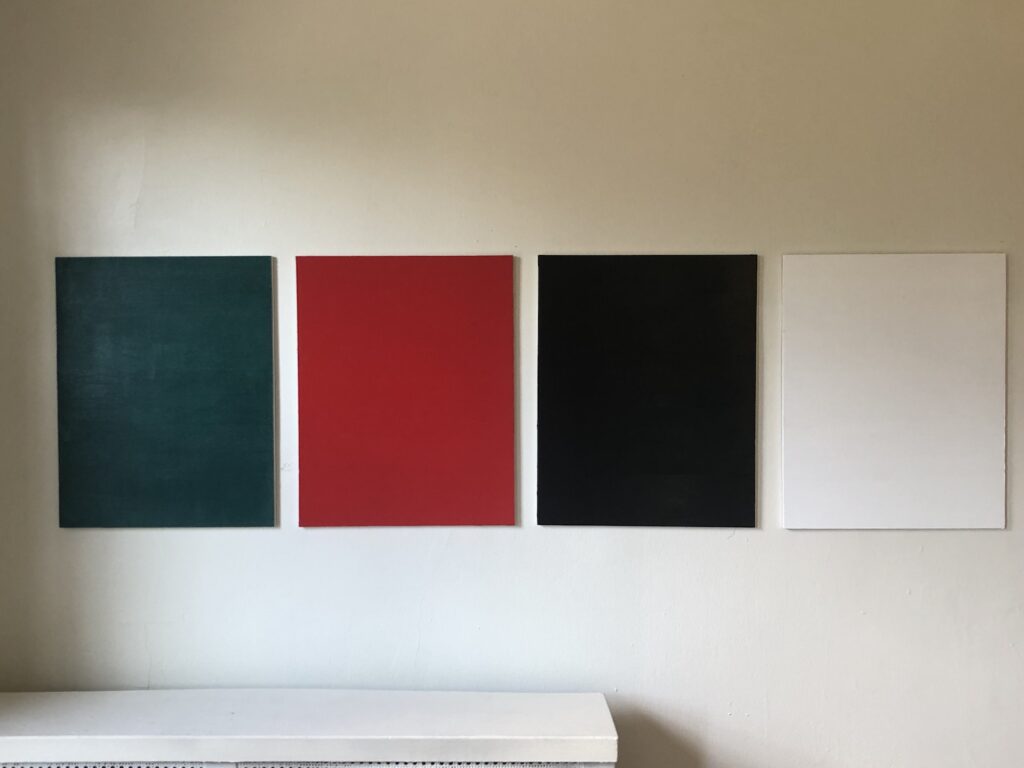
Gonzalez-Torres Forbidden Colors, May 2021

the making of, by greg allen

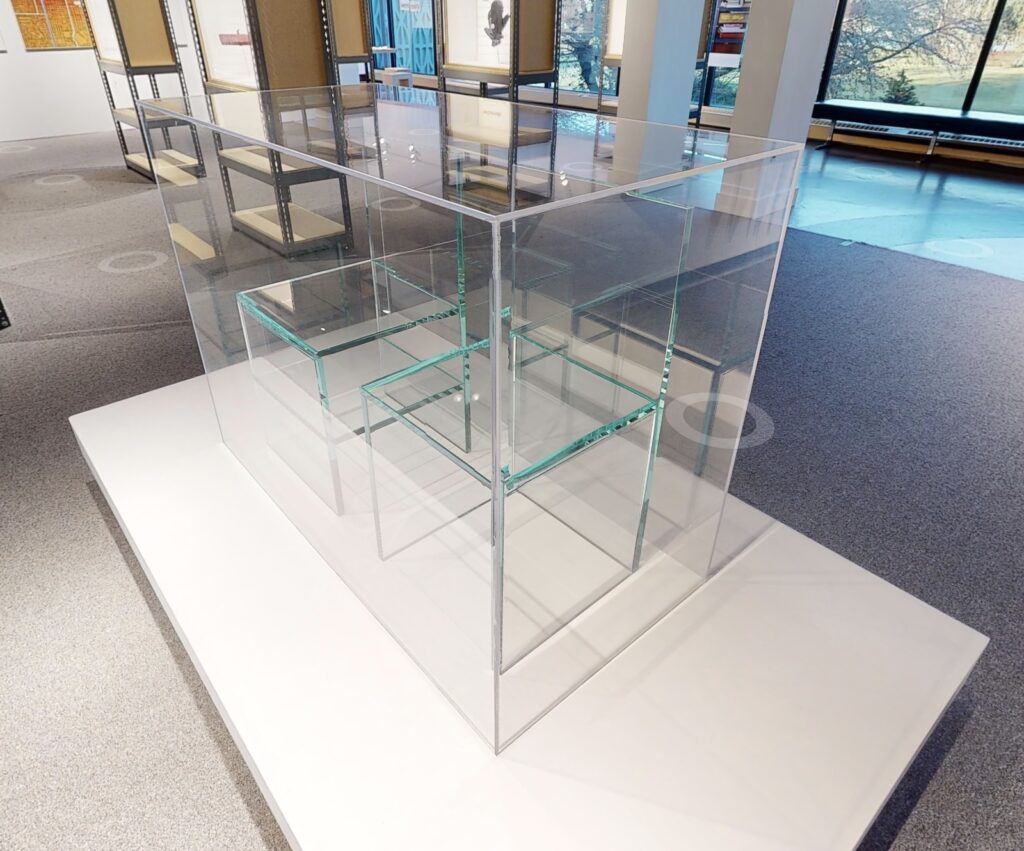
This morning on the good social media, Kevin Buist mentioned that the Museum of Vancouver had a Tobias Wong exhibition last year. All We Want Is More ran from November 2022 thru July 2023. Obviously, I missed it, but there is a virtual tour, and I had to stop and post this, because the first thing you see is Glass Chairs Nos. 1 and 2 in a plexiglass box.
The wall text notes that Wong’s appropriations of other people’s works—in this case, Donald Judd’s 84 chairs—”were not always welcomed or understood and provoked heated conversations about notions of authorship.” Also, because he “had always found Judd’s chairs uncomfortable,” Wong made his chairs “slightly higher.”
The label for the chairs reads: “Initially prototyped in 2002 for the now defunct, New York-based T for Troy, in 2004 Glass Chairs nos. 1 and 2 went into production with Twentieth, a high-end design store based in Los Angeles. Twentieth granted MOV a one-time license to reproduce the chairs using Wong’s design specifications. “
This is an unusual piece of information for a wall text, but they also have a making-of video that shouts out the mount maker, so maybe that’s just how MOV rolls. What’s important is, rather than borrow some, someone at MOV just ordered some glass and glued these chairs together.
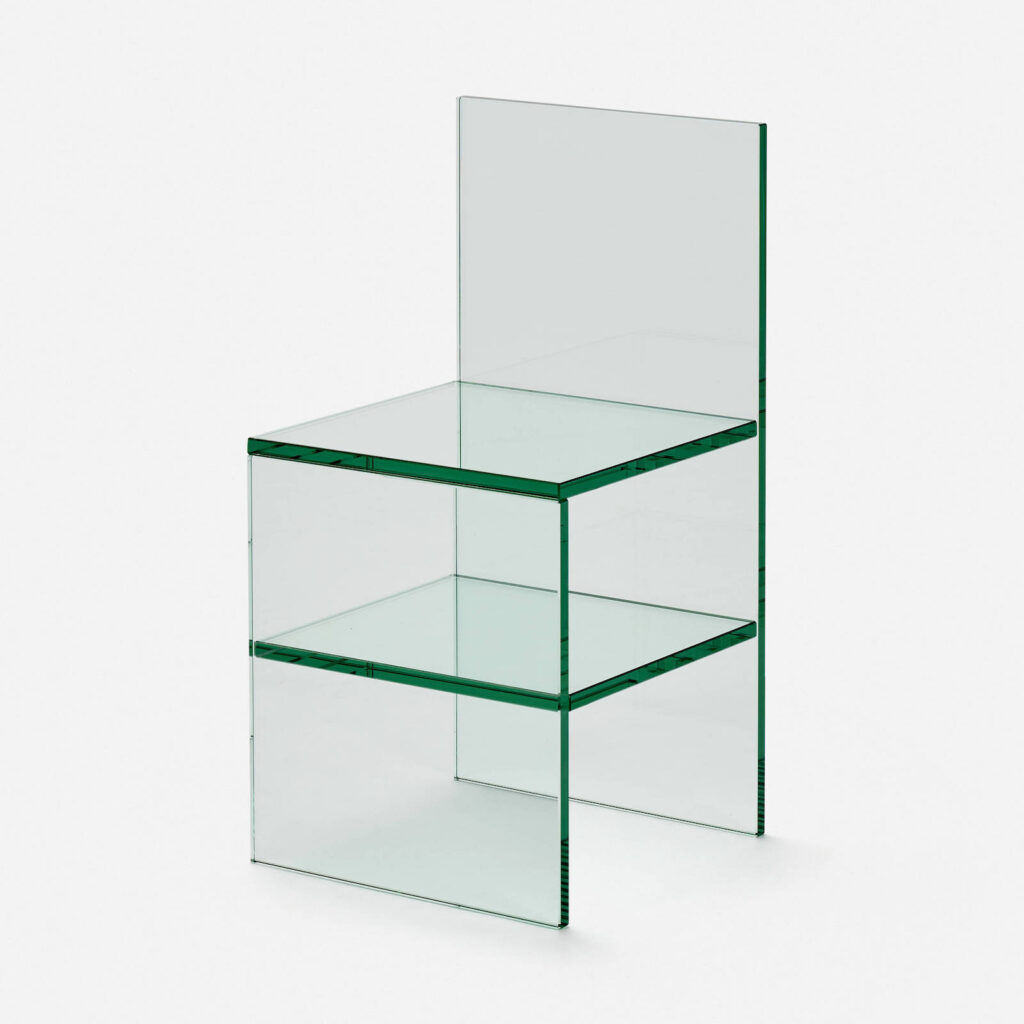
Not to provoke heated conversations about notions of authorship, but Judd’s chairs are 30 x 15 x 15 inches, and Wong’s chairs are 31 1/2 inches tall and 16 inches wide, and the glass is 3/4-inch thick. Which means if the seat is 16 inches square, the shelf underneath—the chair with the shelf is No. 2—is 16W x 15 1/4 D. Whether there is two pieces on the side [No. 1] or one piece on the front [No. 2], the other vertical glass pieces are 19 x 16 inches, and they are set under the seat.
Here is an 8-minute YouTube video on how to make a glass display case with the Bohle UV bonding system. It looks just like the chair! Why not try it at home today?
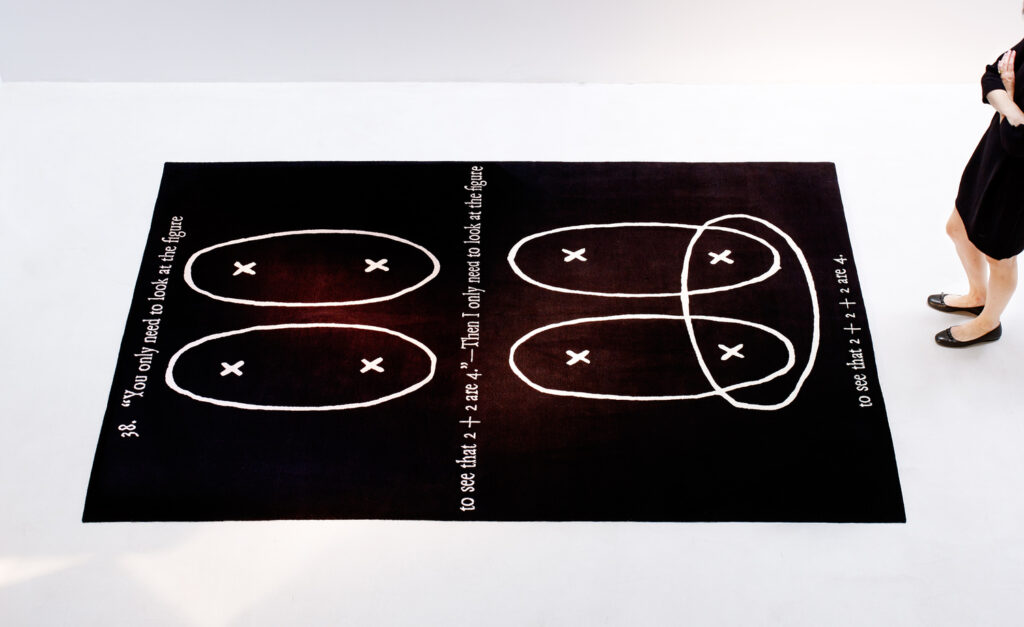
For years now, I’d assumed that it was vaporware. Research inquiries had always turned up nothing. But where the Felix Gonzalez-Torres Foundation closes a file, Joseph Kosuth…unrolls…a carpet.
Critic Deborah Solomon mention this morning of a carpet in Kosuth’s house led me to Equator Production, an artist carpet venture by Petra and Ranbir Singh with Reiner Opuku, that ran from 1985 until 2003. Petra seems to have rebooted it [Kosuth’s carpet, Remarks on the Foundation of Mathematics, has the earliest date of the new bunch: 2015.]
And in 1991 Equator Production made “Untitled” (Free Tibet), a handwoven carpet with a text saying “FREE TIBET” on it, by Felix Gonzalez-Torres, which was listed as no. XXVI in the “Registered Non-Works” appendix of the 1997 catalogue raisonné.
Continue reading “That Felix Gonzalez-Torres Carpet”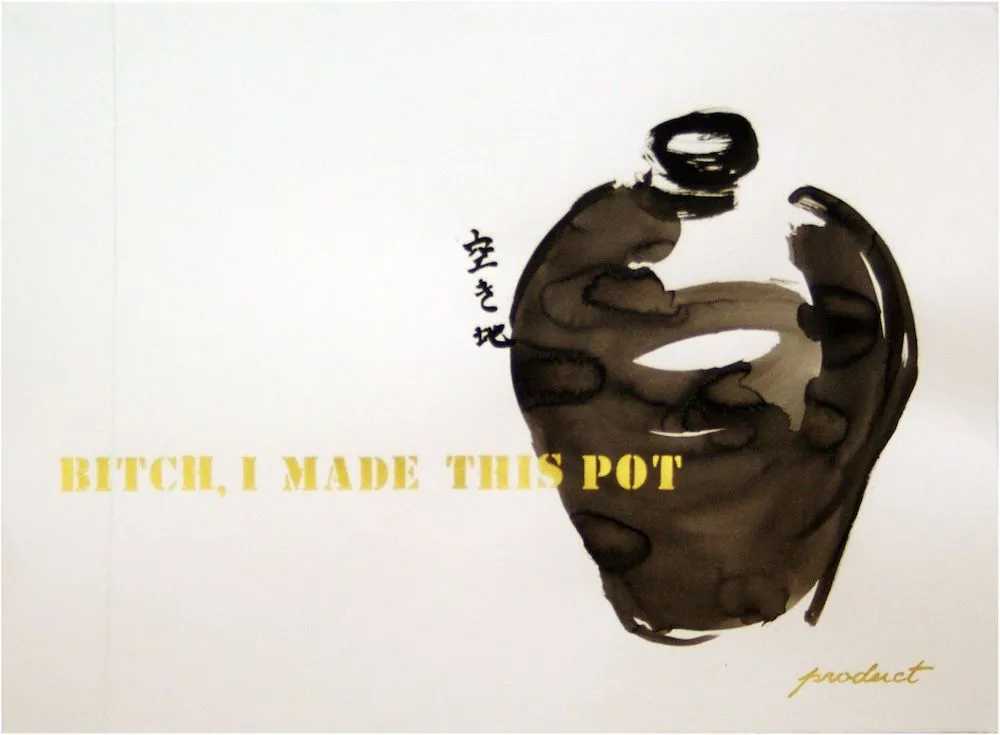
The Arthur Jafa – Theaster Gates conversation in Tank 96 led me to much more Gates content, including this fascinating discussion by Gates, Yuko Kikuchi, and Hiroki Yamamoto, about mingei, the intersectionally problematic folk art aesthetic of Japan conjured in the early 20th century by Soetsu Yanagi. [The Gates hype was in anticipation of his show, Afro-mingei, which opened at the Mori Art Museum yesterday.]
Despite mingei‘s origins as nationalist propaganda, and its “double Orientalist” emphasis of primitivism while appropriating Korean ceramic traditions, and its gender-biased gatekeeping that continues a century later, Gates et al still manage to make aesthetic and cultural meaning from engaging with it. And that problematic faving paradigm comes in handy.
Continue reading “Theaster Gates, et al”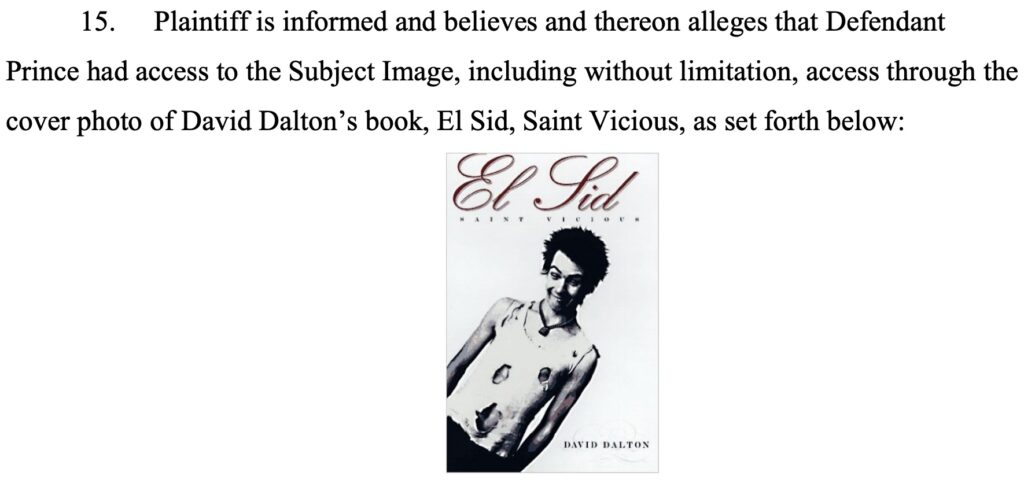
What was going on in 2016 that I missed an entire Richard Prince copyright infringement lawsuit? It makes no sense!
Well, it kind of makes sense, because it lasted for about five minutes before it was withdrawn, and it never reappeared.
Continue reading “Sid Litigious: The Forgotten Richard Prince Lawsuit”A screenshot of Columbia linguist John McWhorter’s latest NYT newsletter was posted to social media by Bo Austin:
Last Thursday [18 Apr 2024], in the music humanities class I teach at Columbia University, two students were giving an in-class presentation on the composer John Cage. His most famous piece is “4’33”,” which directs us to listen in silence to the surrounding noise for exactly that period of time.
I had to tell the students we could not listen to that piece that afternoon, because the surrounding noise would have been not birds or people walking by in the hallway, but infuriated chanting from protestors outside the building…
The protestors are from the Gaza Solidarity Encampment, and they are calling for Columbia to divest and disassociate from Israel and to stop the genocidal attacks on Palestinians in Gaza. The protest began alongside university president Minouche Shafik’s testimony at the US House of Representatives last week. It has intensified and spread to other colleges after Shafik called NYPD into campus to arrest student protestors for the first time since 1968.
The idea that Cage meant 4’33” to be an ersatz reflection on bird calls and room tone is misguided at best. In 1999 art historian Jonathan D. Katz wrote of 4’33” that it, “inaugurated a process of reading that moved the listener, potentially, from unselfconscious complicity with dominant forms of expression…toward a degree of self-consciousness about one’s role as a listener or a maker of meaning.”
Which would be a helluva thing for these kids to learn in their humanities class anyway, including right now. If experiencing performances of 4’33” in the midst of protest, or resistance, or military attack could make a difference of even a day in this horror, then I’d say everyone download the John Cage Trust’s 4’33” app, and start recording.
But McWhorter’s entire newsletter turns out to be a sonic justification of police violence against the protestors. He repeatedly cites the sounds of the student encampment and of sympathizers on the street with destroying the peace, the kind of peace that requires no response. No ruckus, no police.
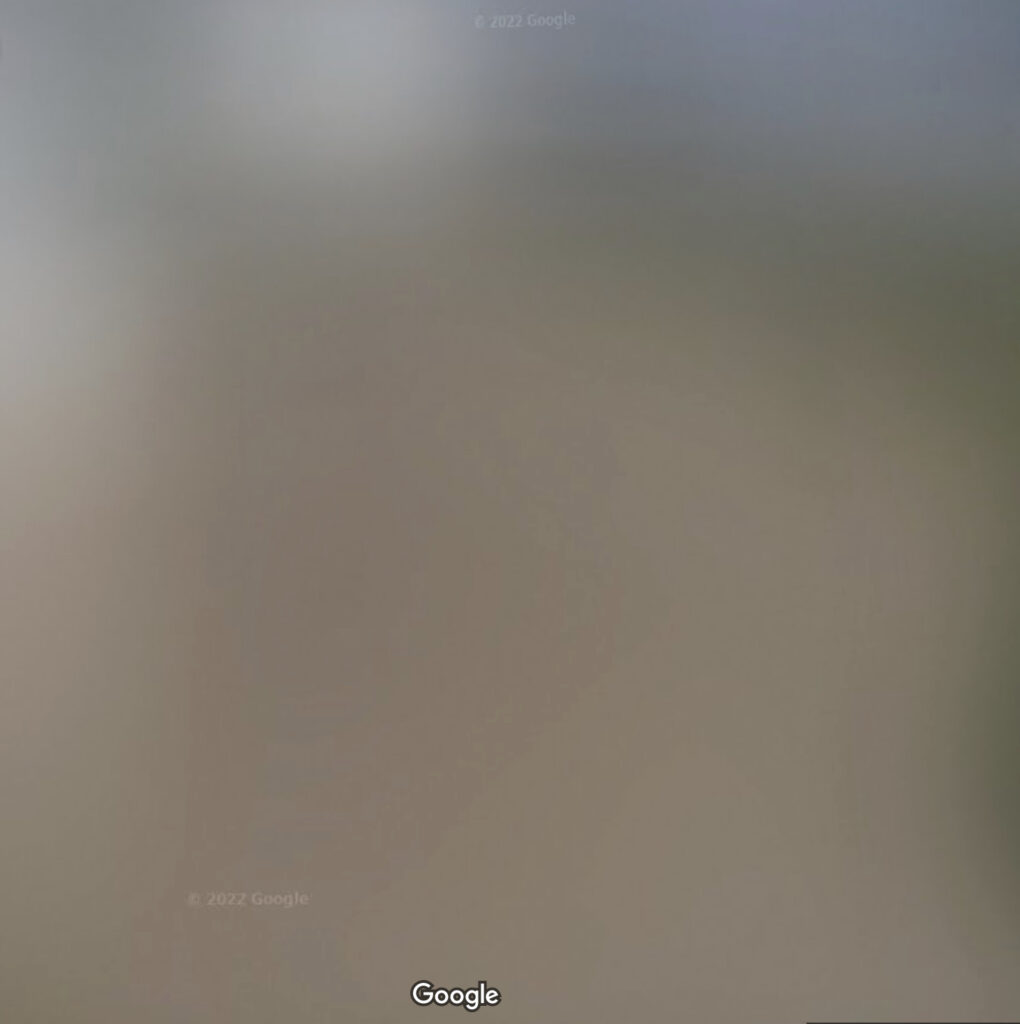
Looking to see what they’re tearing down to build their new offices and whatever, I was surprised to see the Rothko Chapel is blurred out on Google Streetview.

Just a bit, and just one pano, but still, it was unexpected and unexplained.
Previously, related: Blurmany and the Pixelated Sublime
The performance lecture form has been of interest to me and a topic on this site for an extended period of time.
It has its origins in my own professionally driven interest in Powerpoint as a Creative Medium [oof so many dead links, from when I also believed hotlinking images would be the best practice/fair use realization of a Project Xanadu-like networked utopia. I’ll fix them in a minute.]
Then I was critical of the posthumous transmutation of Robert Smithson’s Hotel Palenque lecture and slideshow, delivered at the University of Utah in 1972, into an acquirable work of art.
The next year, when I discovered—via some snide comments by disgruntled art faculty at my welcome dinner—that my invitation to speak at the UofU had been arranged under the auspices of a visiting artist lecture, I quickly decided to become an artist. I had my younger brother sloppily record my lecture on video, an homage to Alex Hubbard’s drunken bootleg video re-enactment of Smithson’s Hotel Palenque lecture, which was a topic of my talk. [That video, uploaded when YouTube had still time limits, is in eight parts.]
But I also ended the lecture by declaring it a work of art, in an edition, and I sent around a stack of signed and numbered certificates of authenticity for anyone who wanted one. I think I made 100, and got 40 or so back? [Shoutout to my OG collectors, that turned out to be CR-1.]
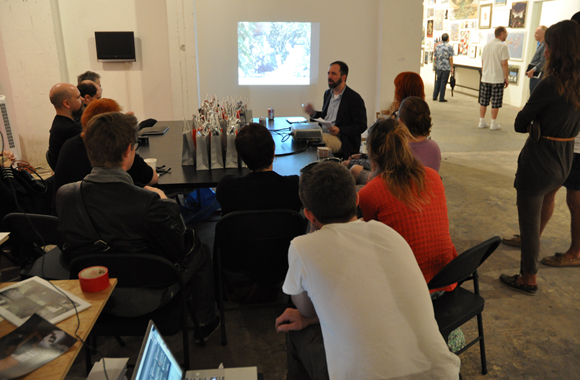
In 2010 I made a blog post into a slideshow into a performance at Jen Dalton & William Powhida’s #rank in Miami, “Relational Aesthetics for the Rich, or A Brief History of the Gala as Art”, with gift bag editions [on the table above].
brb, have to check and update a dozen dead links.
While an audience question that is more of a comment is a curse, a lecture that’s more of a performance is a blessing. Mindy Seu writes in Outland about artists who work in the medium of the lecture.
Lecture-as-performance calls assumptions of authority and credibility into question, Seu argues. It also opens the process and tools of lecture—such as podiums, Powerpoint, and Zoom grids—for critical examination or reworking.
One intriguing example Seu cites is Gordon Hall’s 2014 work, Read me that part a-gain, where I disin-herit everybody. Through the course of talking, Hall registers the implications of power, precarity, tension, and chill as he engages an array of prop-, screen- and podium-like objects.
Seu’s article was a reminder to look again for one of the most spectacular artist lecture/performance works, Suzanne Bocanegra’s Honor, which took place at The Met in February 2022. And wow, finally, it is on YouTube. Honor, as The Met describes it, was “a stage work that masqueraded as an artist lecture about one of The Met’s most important 16th-century tapestries.” If the theatrical link wasn’t strong enough, Bocanegra had actress Lili Taylor present the lecture while she, the artist, sat at a table on the edge of the stage, apparently feeding Taylor her text.
Which, in turn, makes me think way back to an artist talk I attended at the New School, by Maurizio Cattelan. Except, at the end of the lecture, the speaker revealed that he was not actually Cattelan, but a friend of the artist named Massimiliano Gioni, who was then an editor for Flash Art. Carol Vogel wrote about it months later, but I have not yet found this recording online.
Claire Bishop wrote about the lecture-performance as a form and namechecked some more classics of the genre, including Andrea Fraser and John Cage, in her review of Honor for Artforum’s Best of 2022 roundup in December.
Performing Lectures, by Mindy Seu [outland.art]
Best of 2022 | Claire Bishop on Suzanne Bocanegra’s Honor [artforum]
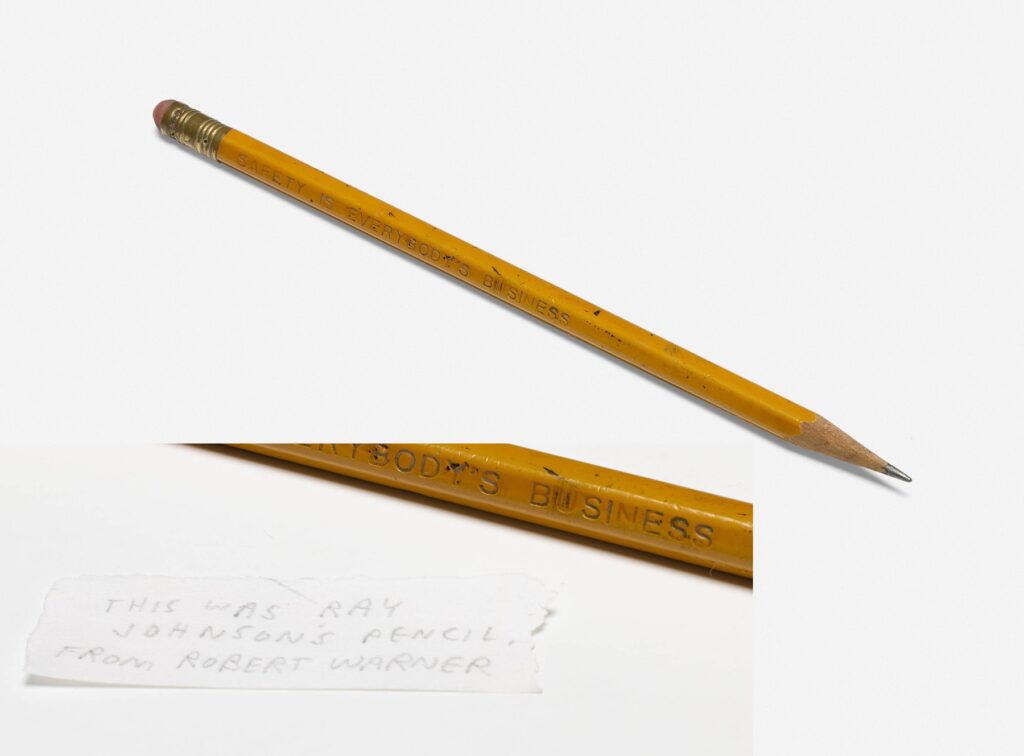
Jason Polan had a pencil that belonged to Ray Johnson. He got it from Robert Warner, a friend and longtime correspondent of Johnson’s. It will be sold next month with a note from Polan written [in? with the?] pencil.
Lot 13o on 3 May 2024: Ray Johnson’s Pencil, est. $500-700 [wright20]
Tables of Content: Ray Johnson and Bob Warner, 2012 BAMPFA exhibition [rayjohnsonestate]
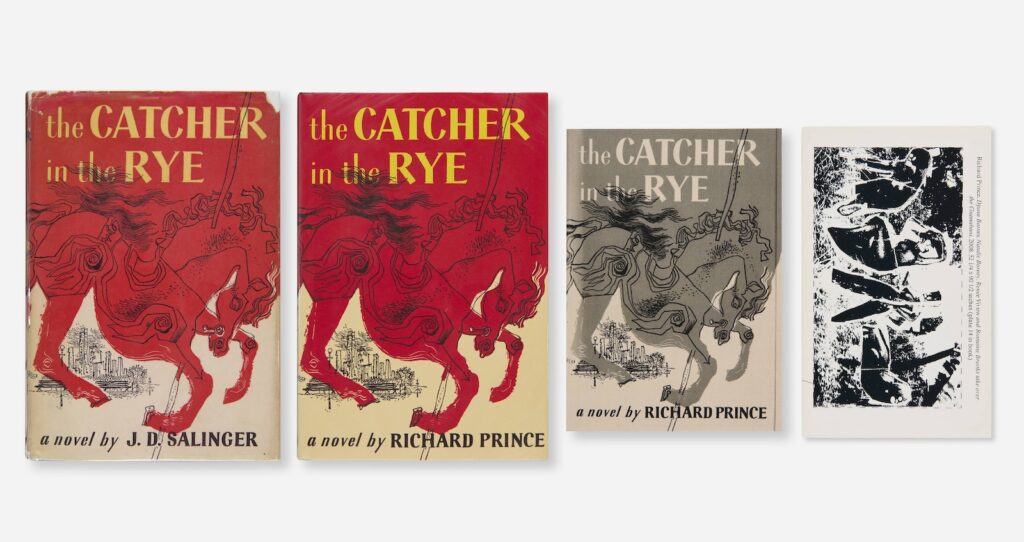
I’ve never been more excited for the Third of May, or more implicated.
It’s still wild and sad that artist Jason Polan is not here, and not just because he left his project to draw every person in New York unfinished. Polan’s collection is coming up for sale on May 3rd, 2024, and it includes a bunch of his own work, plus artworks and artist books by others.
Among those works is this surprising quartet being sold as the The Catcher In The Rye Collection, which includes: JD Salinger’s original 1951 novel; an unopened copy of Richard Prince’s The Catcher In The Rye, which he sold from a blanket along Fifth Avenue in 2012; Eric Doeringer’s 2018 bootleg version of Prince’s Catcher, with an original drawing for and by Jason; and
[mic drop]
[picks mic back up] The Deposition of Richard Prince, which I published with Bookhorse in Zurich in 2013, and which feels like the hardest of the four to find sometimes.
Obviously everyone is encouraged to bid. If you can’t wait, four of you can at least get your own copy of Doeringer’s book directly from him.
3 May 2024 Lot 121: The Catcher in the Rye Collection, est. $500-700 [wright20]
I don’t think Matt Zoller Seitz even knows how to do a bad interview, but his discussion with Ken Loach on the occasion of the release of The Old Oak, which Loach, 87, has decided will be his last film, is really excellent. Part of that is their discussion of the experience of filmmaking, Loach’s process, and style, something the famously naturalistic, un-stylish [sic] filmmaker apparently never gets to talk about:
If you were to distill “How to make films the Ken Loach way,” what would be the most important rules?
Camera at eye level. Natural light. Lens like a human eye. No great wide-angle lens and no extreme telephoto effects. Don’t intervene in an actor’s space, you know? Respect their space. Within those parameters, light is critical because it can tell viewers whether you’re gonna treat somebody like a suspect in a hostile interview or whether you’re gonna engage with someone sympathetically. I’ve learned a lot just looking at old paintings. First thing when you look for a location is “Where’s the light?” It isn’t about the place. If the light doesn’t work, we needn’t see any more of the scene. It’s not only useful for lighting performers, it’s just immensely beautiful for shots. And then you consider the balance of people in the frame, the balance of architecture, the rhythm of cutting. Bad cutting can destroy a sense of reality.What is bad cutting?
I wish him a long and healthy life, but can we get more interviews on process with him quick, please?
Ken Loach on his last film, ‘The Old Oak,’ Power and Hope [vulture]
The Embassy Scroll by Lunt Silversmiths was the official silver pattern for U.S. embassies and consulates around the world.
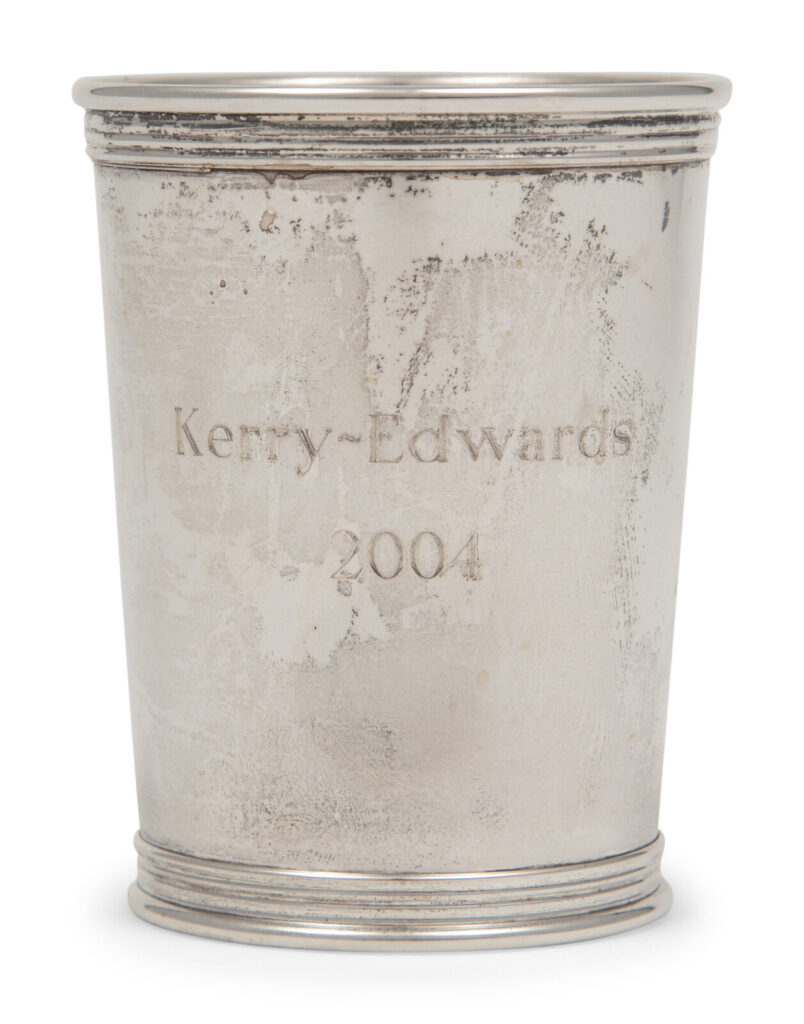
Lunt also made commemorative mint julep cups, a form of gift that evolved in Kentuckian horse racing society.

This sterling silver commemorative mint julep cup was made by the Kerry Edwards 2004 campaign for the U.S. Presidency. “Together we made a difference/ With Appreciation/ John Kerry” is engraved on the verso.
If there was a difference made in the 2004 presidential election, it was the failure of a decorated war hero turned opponent to fend off the attacks of a draft dodger turned war criminal in the middle of an historically unpopular and unjust war.

The commemorative mint julep cup belonged to former Secretary of State Madeline Albright and will be sold at the auction of her estate on May 7th, 2024, right after this monogrammed American Silver Covered Vegetable Dish.
John Edwards’ 2008 campaign for president was derailed by the revelation that he had a child with a webvideo documentarian after his wife was diagnosed with breast cancer. Edwards also seduced Bunny Mellon to give him over seven hundred thousand dollars during his presidential race, but not as a campaign contribution. He used the money to cover up his affair. Lunt Silversmiths, a family business founded in 1902, sold its trademark to Reed & Barton in 2009 and was dissolved in bankruptcy. John Kerry became Secretary of State during Barack Obama’s second term. Albright died in 2022.
7 May 2024, Lot 138: A Kerry-Edwards 2004 Commemorative Mint Julep Cup, est. $300-500 [hindmanauctions]
Previously, related: George Washington’s Lace (and RBG’s silver collar)
Untitled (Love, Henry), 2018 –
OK, I guess it’s clear I was not paying close enough attention when I posted about Ellsworth Kelly’s Red Floor Panel (1992) in 2022. I recognized that Kelly made five floor works. They began in 1990, Matthew Marks wrote, with Yellow Curve, for Portikus and were followed by “two in black, one in blue, and this one in red.” I’d assumed that Glenstone purchased Yellow Curve (1990), but of course, it was later made clear that Kelly did not recreate Portikus’ Yellow Curve, but made it anew as an autonomous work, Yellow Curve (EK 808), 2015, for an identically dimensioned—and purpose-built—space. Which means technically, Kelly made six.
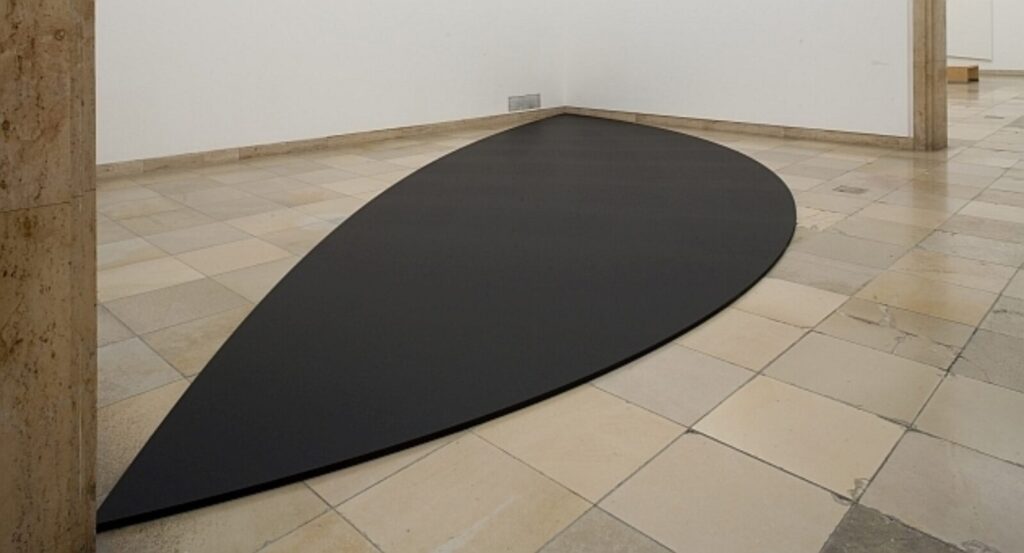
Red Floor Panel was reconstitutable and not site-specific, and Yellow Curve was not. Which are two potential conditions a floor piece can have. And now while researching Kelly’s 1955 painting Bar, I surfed across the 2011 exhibition, Ellsworth Kelly: Black & White at Haus der Kunst in Münich. For this venue Kelly was commissioned to create a floor panel the Haus called Black Curves [though Artforum called it Two Curves For Floor]. This panel extended 11 meters across a bay of the museum, and was destroyed when the show moved to Wiesbaden.
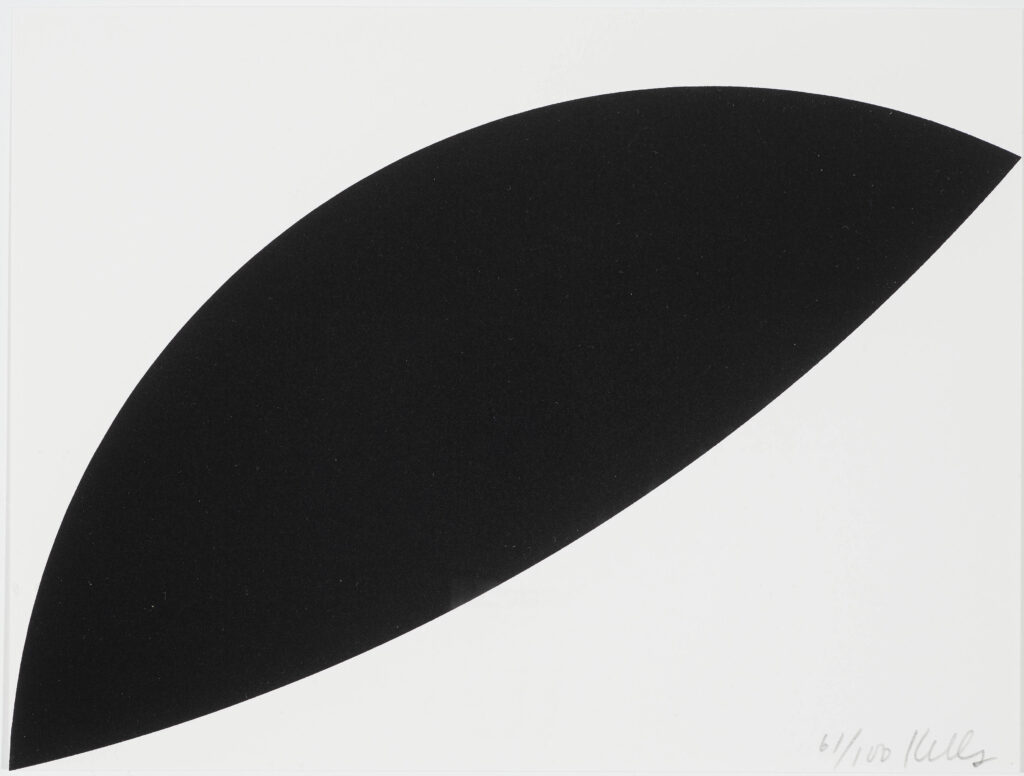
It lives now only in proportion, memorialized in the diminutive fundraising edition created for the exhibition. Though with the dimensions and the plan, it feels ripe for recreating; all you need is a space with an 11m hypotenuse.
Previously, related:
Ellsworth Kelly Red Floor Panel (1992)
EK 808: The Making Of
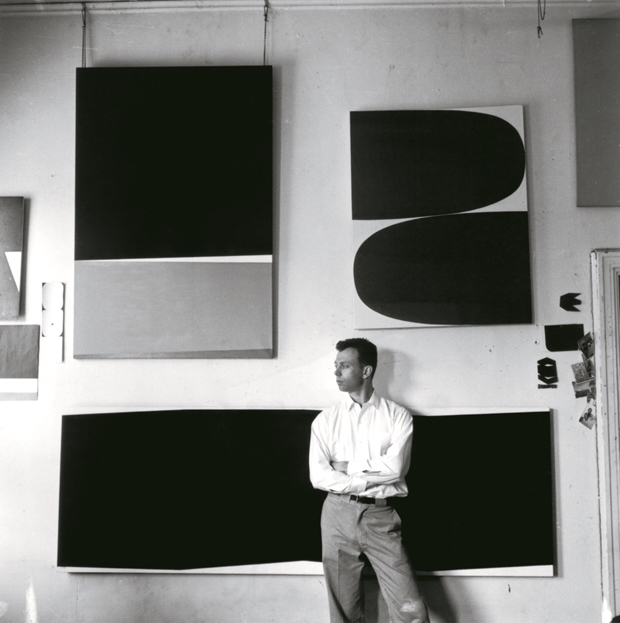
Last April during the centennial year of the artist’s birth, photographer Onni Saari posted a 1956 image to Instagram of Ellsworth Kelly in his studio on Broad Street in lower Manhattan. In addition to some tantalizing little works on paper and images stuck into the door frame, three paintings are visible behind him. Counter-clockwise from the bottom they are, Bar (EK87), Red Curves (EK81), and Marblehead (EK IDK?)
The first two, at least, were included in Kelly’s first show at Betty Parsons Gallery in 1956.
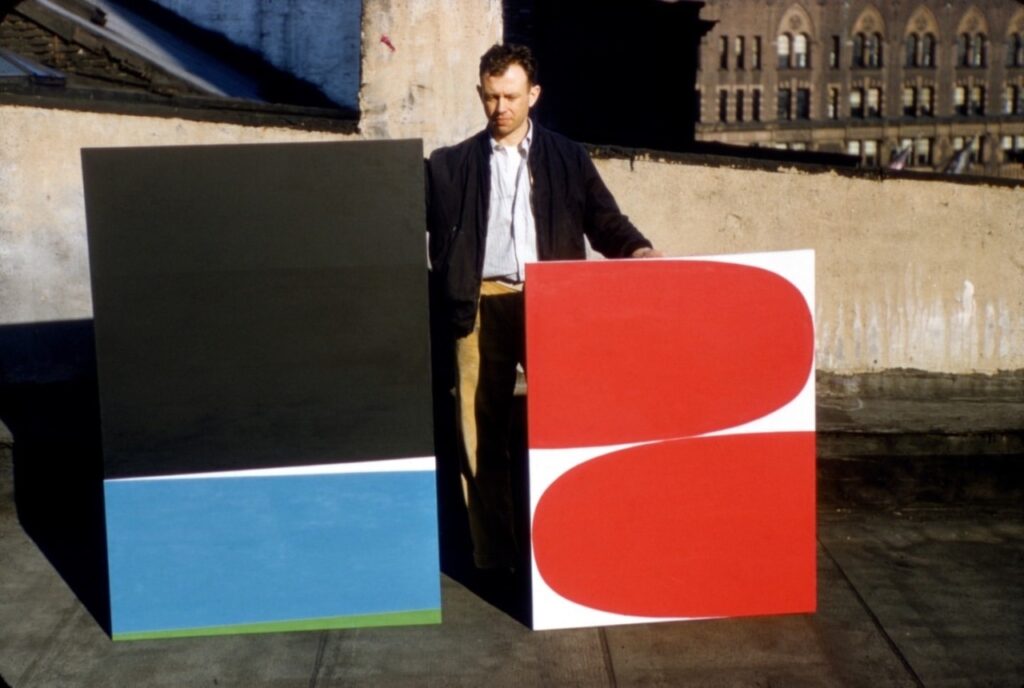
In November 2023, the Ellsworth Kelly Foundation posted this 1955 photo of the artist posing with Marblehead and Red Curves on his Broad St rooftop. The caption read, “Ellsworth considered Red Curves to be an epiphany of sorts, leading to many more curves, though the same cannot be said for Marblehead. The black, pulsing blue, and irregular bands made it a favorite with a Betty Parsons dealer [sic], but Ellsworth’s dislike of the composition was so strong that he destroyed it in 1995. ‘One I never cared for,’ a scrupulous Ellsworth wrote in his notes.”
The circumstances around Kelly’s decision to destroy Marblehead after 40 years intrigue me, but in writing this post, I have run out of time to get to the catalogue raisonné to find out what happened.
Previously, related: Destroyed Robert Gober Ellsworth Kelly Painting

Alex Greenberger was not getting the Arthur Jafa love message, on account of all the death. In his ARTnews review of Jafa’s shows, he doesn’t see a point to the en-Blackening and looping of violent scenes from Taxi Driver at Gladstone; nor to Jafa’s concatenation at 52 Walker of Cady Noland-esque image/sculptures “seemingly at random,” fronted by an image of Noland herself:
Those borrowed shots continue outside Picture Unit in the form of an assembly of cutouts, some of which have holes bore through them. These sculptures allude to similar ones by Cady Noland of Patty Hearst (from her Symbionese Liberation Army days). Noland’s portrait, featuring her hands in front of her face, is here appropriated by Jafa. He places her beside an image from 1970 of artist Adrian Piper, performing with a sock stuffed into her mouth. What do Piper and Noland have to do with, say, a black lamb with a red ribbon around its neck or a group of rock musicians? Nothing, except that the images all ended up in Jafa’s archive, as have many others that he has arranged, seemingly at random, in the form of binders.
Greenberger’s experience feels a little wild, ngl, because it does seem closed to what have been central tenets of Jafa’s visual art practice from the jump: his decades-long accumulation into binders of photos, images, clippings, and ephemera that resonate in some way with the lived Black experience and as documentation of a generative Black aesthetic language; the centrality of music to Black—and American and world—culture; and the fundamental decentering of white validation and judgment. Everyone gets to listen in, Jafa has repeatedly said, but he is addressing Black people.
Continue reading “Arthur Jafa Is Hard To Find”